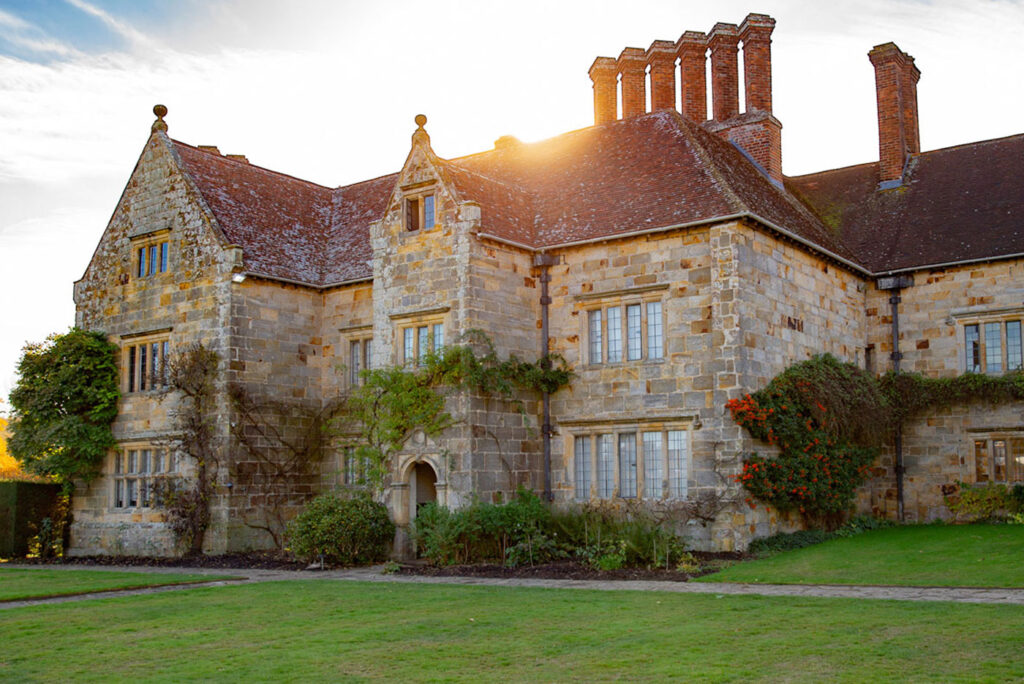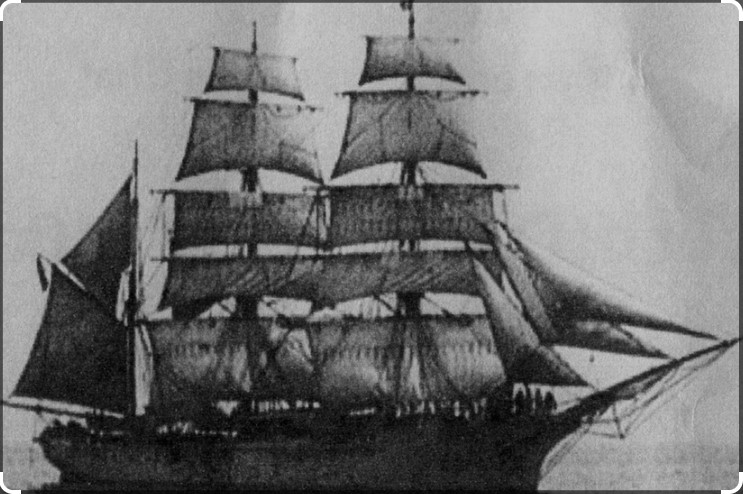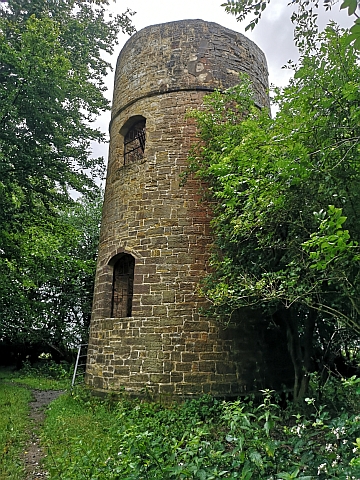Mary Ann Skinner
b. 1805 d 1881
LIFE IN ENGLAND
Mary Ann was born in 1805 in Canterbury, Kent, UK and christened on the 5th May 1805 at St Pauls, Canterbury. Her parents were Gabriel Skinner and Lydia Capeling, he was a carpenter or sawyer. Gabriel’s father was also Gabriel and Gabriel snr with his wife, Sarah Baker and children moved to Brightling on the 11th December 1781 when Gabriel jnr was 12. Her parents were living in Burwash in the 1841 census. Mary Ann worked at Brightling Park as a domestic servant owned by John (Mad Jack) Fuller.

Living at Brightling Park was James Fairhall, a friend of Mad Jack. Mary had a relationship with him and Alfred Skinner was the result. James Fairhall refused to marry Mary, she named James as the father of Alfred and went to the Court of Petty Sessions where James was obliged to support his son. The Church Warden books in East Sussex state that James was required to pay 2 shillings and 6 pence per week until his son, Alfred, reached the age of 21.
Brightling Park
MARY ANN SKINNER’S ANCESTORS
MARRIAGE AND IMMIGRATION TO AUSTRALIA
Mary married John Sharpe on 2 January 1826 in Brightling and came out to Sydney in 1838 aboard the Amelia Thompson, their three children, George born 1827, Eliza born 1831 and Louisa born 1835 died on the voyage. George died from typhoid and the two girls from smallpox. The majority of immigrants on board were agricultural labourers and shepherds. The ship was placed in quarantine on arrival in Sydney for five weeks. The Sydney Gazette of 3 July 1838 reported;

The “Amelia Thompson” from Plymouth with 238 immigrants on board, entered the Heads of Port Jackson yesterday, but as it appeared that small-pox and typhus fever had broken out among the emigrants on the passage, she was placed in quarantine until a Medical Board appointed for the purpose, could decide whether she could with safety be brought up to Sydney. It appears that there have been, in all, 7 cases of small-pox, 3 of which proved fatal, and 168 cases of typhus fever, 30 of which have proved fatal. No cases of small-pox has occurred since 20 April, but there still remain as many as 12 cases of typhus fever. The Medical Board sat yesterday and decided that the vessel is to be detained in Quarantine.
The Amelia Thompson was piloted to Spring Cove at North Head, the quarantine station, where the passengers, at last in port after a horrific voyage, observed the conspicuous cemetery. The ‘diseased’ area was marked by a dozen, two and a half meter high pillars. These pillars were cairn shaped, mortared and washed with lime, so that no one could mistake the patrolled border. On “healthy ground” within the borders but above the tents and tarpaulins of the sick were four unlined wooden buildings, for the healthy and convalescent, free of infection. There was a doctors house and hospital.
After landing, whooping cough broke out among the passengers. The epidemic delayed their release until the end of July, although the ship, crew and cabin passengers had been released on Monday 23 July. Six more young children were buried at the Quarantine Station in July. In all 15 adults and 30 children died either during the voyage or in quarantine.
The family was brought out as Bounty passengers by immigration agent, John Marshall, the Rector of Brightling in Sussex and the Steward of the Earl of Ashburnham. He certified John Sharpe a ‘worker and industrious man of good character’. The reverend also certified that they had been married 2 January 1826. They were farm servants.
They did however have two more children Mary Ann, born 13 March 1840 in Port Macquarie and Lydia, born at Marsfield on 3 November 1844. Mary’s daughter Mary Ann married a man named James Layton, who used to tell, “of driving a bullock dray in Sydney and said he could have bought the site of “Sydney Town Hall’ for a mere trifle”. Mary died on 1st December 1881 at Granville and is buried at Parramatta.
FAMILY
from Mark Dillon
John and Mary Ann Sharpe had two daughters in Australia. Soon after they arrived they moved to Port Macquarie where they baptised Mary Ann, 12 April 1840 at St Thomas’. Mary Ann had been born 13 March. Back in Sydney in 1844, another daughter, Lydia, born 14 October, baptised 3 November 1844 at Marsfield, or ‘The Field of Mars’ as it was then called. Mary Ann married 2 June 1860 to a labourer, James Layton, at William Layton’s house in Parramatta, by the Reverend Charles Waters, newly arrived Primitive Methodist preacher. The Sharpes lived at Parramatta at this time – John had to give his permission as Mary Ann was just under 21. Her sister, sixteen years old, Lydia, was a witness.
Mary Ann Sharpe died 1 May 1881 at Granville, of ‘senile decay’ aged 76. Her husband, John Sharpe, was the informant – he lived at Granville, stated her parents correctly. She was buried in the Wesleyan Church Cemetery at Parramatta. Samuel Cook and Moses Gazzard were witnesses to the burial. John himself would have been 79, if he was born in 1802 – on his arrival he had stated he was ‘35 last July’ (1837).
John Sharpe died a few years later in 1885 aged 83. It took me quite a while to find the right death certificate, though it should not have.[1] John Sharpe died 29 December 1885 at South Street, Granville, of ‘senility and asthemia’ aged 83. His death was certified by Lydia Gapes, his daughter, who was the informant and she stated that his father was Ralph Sharpe, a carpenter, and mother was Elizabeth Perry. She stated that he was a labourer, and married at 24 to Mary Ann Skinner, and had emigrated from England 47 years previously; that his children were Mary Ann 45 and Lydia 41, living, and that there were 2 males and 3 females deceased. Most of these details are accurate. John Sharpe was buried 30 December 1885 at the Rookwood Necropolis, by the Reverend Thomas Harrison in a Church of England service. The witnesses to the burial were J C Gapes (Lydia’s son and John’s grandson) and H R Bird.
Since Lydia and her husband George Gapes were living in South Street, Granville, this implies that her father was living with them at the time of his death – which does make sense, as he was 83. The information Lydia supplied to the Registrar fits with the evidence for his father – ‘Ralph Sharpe’ is uncannily close to our belief that his father was a ‘Rolfe’ – and is also the first and only evidence for John Sharpe’s mother: Elizabeth Perry.
This all fits with the other information that we have, such as the connection with Brightling, the naming of John Rolfe as the father of John Sharpe on his emmigration papers, and John’s birth date as July 1802 (prior to the marriage of Elizabeth to John Perry). I am confident we should trust this information until shown otherwise.
James and Mary Ann Layton went on to have a large family – 9 children. Mary Ann died in Goulburn 1 July 1920. Lydia must have stayed in touch with her sister. In a diary she noted the death of her niece’s husband in 1913. David Farr had married Rebecca Layton. David was a senior constable with the police at Concord and shot himself 1 May 1913.[4] Lydia actually had a child 30 August 1863 – before her 1868 marriage to George Gapes. Five years earlier, as an 18 year old at Haslem’s Creek, she registered a son, John Charles Sharp, without identifying the father. There’s no reason to suspect that it was George – he was in the middle of having four children with Harriet and there were no Johns or Charles in the family on his side. The father was proved to be Charles Purnell (or Burnell). Lydia brought a suit against him for support as he had rejected the claim
Sydney Morning Herald Monday 5th May 1913
POLICE OFFICER SHOT – BODY FOUND IN SCRUB
…Farr had borrowed a shot-gun and three cartridges from a resident at Concord stating that he was going to shoot some birds. [The police] then commenced to scour the scrub at Yaralla. At about 9 o’clock on Saturday morning Constable Porter found Farr’s body lying in the scrub close to the Walker Hospital. The shot-gun was lying beside the body, and it was apparent that the cause of death was a wound caused by the gun being fired at close quarters. The charge had entered the deceased officer’s head, and death had been almost instantaneous. Of late years Senior-Constable Farr had been in delicate health and troubled with his eyes. A few weeks ago he was given permission to wear long-distance glasses while on duty. Deceased was popular both with the residents of the district and his fellow officers. He leaves a wife and grown-up family.
Mary had a sister, Elizabeth who married Jonathon Rigglesford and they came to Australia in 1856 on the Vocalist, with their seven children.
MAD JACK FULLER
Brightling has a collection of follies built by Mad Jack , these consist of :-
Brightling Needle – a 40 ft high obelisk built on the top of the hill at Brightling, used as a beacon point during the Napoleonic Wars, and now by the ordinance survey as the second highest point in Sussex.
The Sugar Loaf – This was known as Fullers Point, and was built to win a wager made by Mad Jack , that he could see the Spire of Dallington Church from his house, which he could not.
The Temple – This is a small temple/Summer House, in the grounds of Brightling Park, built to resemble a Greek Temple.
The Observatory – This is built on the top of the hill at Brightling, and for many years was famous for its instruments. This area is also believed to be the place that Turner, the landscape painter, did many of his paintings.
The Watch Tower – Again built by Mad Jack , it was believed that it was built so that he could watch the restoration of Bodiam castle, which he had previously bought.
The Pyramid – Built in the churchyard this was to be Mad Jack Fullers mausoleum, it was only allowed to be built by the Rector if a new Public House, replacing the one opposite the church, was to be built 1/2 mile away. This was known until recently as the “Jack Fullers” ;. One final legend of the Pyramid, was that Jack Fuller was buried inside, sitting up wearing a Top hat and holding a bottle of claret, this may or may not be true.
During Mad Jacks era, the famous artist, Turner painted a number of country scenes of Sussex, these were painted on and around Jack Fullers Estate.

MARY ANN SKINNER FAMILY TREE
| PARENT (M) James Fairhall | |||
| Birth | 1805 | Lewes, Sussex, England | |
| Death | JAN 1877 | Lewes, Sussex, England | |
| Marriage | to Mary Ann Skinner | ||
| Father | Joseph Fairhall | ||
| Mother | Hannah Watson | ||
| PARENT (F) Mary Ann Skinner | |||
| Birth | 1805 | Sussex, England | |
| Death | 1 APR 1881 | Parramatta NSW Australia | |
| Marriage | to James Fairhall | ||
| Marriage | 1826 | to John Sharpe at Brightling, Sussex, England | |
| Father | Gabriel Skinner | ||
| Mother | Lydia Capeling | ||
| CHILDREN | |||
| M | Alfred Skinner | ||
| Birth | 20 JUN 1824 | Brightling, Sussex, England | |
| Death | 27 SEP 1883 | Botany Road, Waterloo NSW Australia, buried Coonamble Cemetry, Coonamble NSW Australia | |
| PARENT (M) John Sharpe | |||
| Birth | 1802 | Brightling Sussex England | |
| Death | AFT 1881 | Australia | |
| Marriage | 1826 | to Mary Ann Skinner at Brightling, Sussex, England | |
| Father | John William Walker SHARPE | ||
| Mother | Frances Mary | ||
| PARENT (F) Mary Ann Skinner | |||
| Birth | 1805 | Sussex, England | |
| Death | 1 APR 1881 | Parramatta NSW Australia | |
| Marriage | to James Fairhall | ||
| Marriage | 1826 | to John Sharpe at Brightling, Sussex, England | |
| Father | Gabriel Skinner | ||
| Mother | Lydia Capeling | ||
| CHILDREN | |||
| M | George Sharpe | ||
| Birth | 1827 | Spridlington, Lincolnshire, England | |
| Death | 1838 | At sea Onboard "Amelia Thompson" to Australia | |
| F | Eliza Sharpe | ||
| Birth | 1831 | Friesthorpe, Lincolnshire, England | |
| Death | 1838 | At sea Onboard "Amelia Thompson" to Australia | |
| F | Louisa Sharpe | ||
| Birth | 1835 | England | |
| Death | 1838 | At sea Onboard "Amelia Thompson" to Australia | |
| F | Mary Anne SHARPE | ||
| Birth | 13 MAR 1840 | Port Macquarie, NSW, Australia | |
| Death | 1 JUL 1920 | Sloane St, Goulburn, NSW, Australia | |
| F | Lydia S SHARPE | ||
| Birth | 14 OCT 1844 | Marsfield, NSW, Australia | |
| Death | 13 OCT 1924 | Lewisham, NSW, Australia | |


















